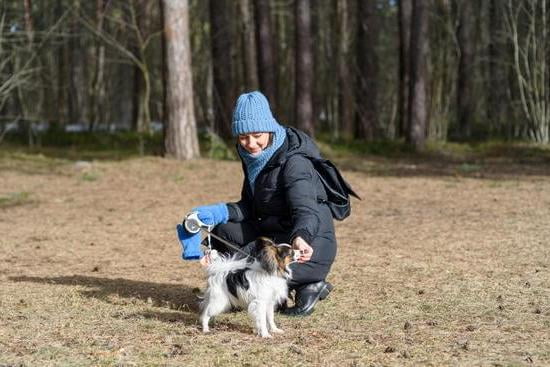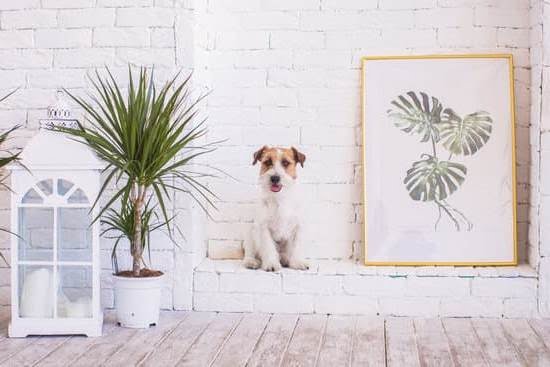Separation anxiety is a common issue among dogs, causing distress and behavioral problems when left alone. Many pet owners wonder, “Will dog training help separation anxiety?” Understanding the root causes of this condition is crucial in addressing it effectively. Dogs may exhibit symptoms like excessive barking, destructive behavior, or even self-injury when suffering from separation anxiety.
Recognizing the signs of separation anxiety in dogs is essential for early intervention. Some dogs become anxious as soon as their owners prepare to leave, while others may display distress hours after being left alone. It’s important to differentiate between typical loneliness and true separation anxiety to provide the right kind of support for your furry friend.
Addressing separation anxiety in dogs not only improves their quality of life but also strengthens the bond between pets and their owners. Training interventions tailored to each dog’s needs can significantly reduce anxiety symptoms over time. By incorporating positive reinforcement techniques and patience, pet parents can help their dogs feel more secure and confident during periods of solitude.
Symptoms and Signs of Separation Anxiety in Dogs
Recognizing Separation Anxiety
Separation anxiety in dogs can manifest in a variety of ways, with each dog exhibiting unique symptoms. Common signs to look out for include excessive barking, whining, howling, destructive behavior (such as chewing furniture or scratching doors), pacing, and attempting to escape confinement. Some dogs may also exhibit house soiling or self-harm behaviors when left alone. It’s essential for pet owners to recognize these signs early on to address the issue effectively.
Physical Symptoms
In addition to behavioral signs, separation anxiety can also lead to physical symptoms in dogs. Some dogs may drool excessively, pant heavily, or exhibit tremors when experiencing separation anxiety. These physical reactions are a result of the stress and fear that the dog is feeling when separated from their owner. It’s crucial for pet owners to pay attention to both behavioral and physical cues in their dogs to determine if separation anxiety is a contributing factor.
Patterns of Behavior
When assessing whether a dog is suffering from separation anxiety, it’s important to consider the patterns of behavior exhibited by the dog. For instance, if a dog only displays distress when left alone for extended periods but remains calm when their owner is present, this could indicate separation anxiety rather than general anxiety issues.
Understanding these patterns can help pet owners tailor their approach to addressing the specific needs of their furry companions. Recognizing these patterns early on will dog training help separation anxiety, can significantly impact the success of interventions aimed at alleviating separation anxiety in dogs.
The Importance of Addressing Separation Anxiety in Dogs
Understanding the Impact of Separation Anxiety
Separation anxiety in dogs is a serious condition that can have a significant impact on both the dog and their owners. Dogs experiencing this anxiety may exhibit destructive behavior, excessive barking, howling, pacing, and even self-harm when left alone.
This not only impacts the well-being of the dog but also creates stress and frustration for the pet owner. Addressing separation anxiety is crucial not only for the dog’s happiness and health but also for creating a harmonious relationship between the dog and their human family.
The Long-Term Effects of Untreated Separation Anxiety
If left untreated, separation anxiety in dogs can worsen over time and lead to more severe behavioral issues. Dogs suffering from chronic separation anxiety may develop phobias, aggression, or even depression. In extreme cases, these dogs may become a danger to themselves or others. It is essential to address separation anxiety early on through appropriate training methods to prevent these negative consequences from occurring.
The Role of Dog Training in Managing Separation Anxiety
Dog training plays a crucial role in helping alleviate separation anxiety in dogs. By implementing positive reinforcement techniques and desensitization exercises, pet owners can gradually teach their dogs to feel comfortable being alone.
Training helps build confidence in the dog, reduce their stress levels, and create a sense of security when separated from their owners. With consistency, patience, and proper guidance from a professional trainer, dog training will help separation anxiety by improving the overall well-being of both the dog and their human companions.
Different Approaches to Treating Separation Anxiety in Dogs
Separation anxiety in dogs is a common behavioral issue that can be distressing for both pets and their owners. While there are various approaches to treating this condition, dog training plays a crucial role in helping alleviate separation anxiety. Through structured training sessions, dogs can learn coping mechanisms and behaviors that can reduce their stress and anxiety when left alone.
Dog training will help separation anxiety by teaching dogs to feel more comfortable and secure when they are by themselves. By using positive reinforcement techniques, such as rewarding desirable behaviors like calmness and patience, dogs can learn to associate being alone with positive experiences. This can help them build confidence and independence, ultimately reducing their reliance on their owners for comfort.
Additionally, dog training can provide mental stimulation for dogs experiencing separation anxiety. Engaging in activities like obedience training or puzzle games can help keep their minds occupied and prevent them from fixating on their owner’s absence. This mental exercise can also help reduce anxious behaviors such as pacing, whining, or destructive chewing. With consistency and patience, dog training can significantly improve the well-being of dogs suffering from separation anxiety.
| Approaches | Benefits |
|---|---|
| Positive Reinforcement Techniques | Teaches positive associations with being alone |
| Mental Stimulation Activities | Helps keep the dog’s mind occupied |
| Confidence Building Exercises | Reduces reliance on owner for comfort |
How Dog Training Can Help Alleviate Separation Anxiety
Separation anxiety in dogs can be a challenging issue for both pets and their owners, causing distress and potentially destructive behavior when left alone. While it can be a complicated problem to address, dog training can play a significant role in alleviating separation anxiety and helping your furry friend feel more comfortable when apart from you. With the right techniques and consistency, training can make a positive impact on your dog’s behavior and well-being.
Here are some ways in which dog training can help alleviate separation anxiety:
- Establishing a routine: Dogs thrive on routine and structure, so incorporating a consistent schedule for feeding, exercise, and potty breaks can help reduce anxiety when you leave them alone.
- Desensitization training: This involves gradually getting your dog used to being alone for short periods of time, then gradually increasing the duration. Through this process, your dog learns that being alone is not scary or stressful.
- Teaching basic commands: Training your dog to follow basic commands like sit, stay, and come can help build confidence and create a strong bond between you. These commands can also be useful in redirecting anxious behaviors when you’re not around.
By combining these methods with patience, consistency, and positive reinforcement, you can help your dog overcome separation anxiety and feel more secure when left home alone. Remember that every dog is unique, so it may take time to see progress. With dedication and the right approach, dog training will certainly make a difference in helping your furry companion feel more at ease when separated from you.
Positive Reinforcement Techniques for Training Dogs With Separation Anxiety
Separation anxiety in dogs can be a stressful experience for both the dog and their owner. It is essential to address this issue promptly to improve the overall well-being of the canine companion. One effective way to help alleviate separation anxiety in dogs is through proper training techniques. By incorporating positive reinforcement methods, dogs can learn to feel more comfortable and secure when left alone.
When implementing positive reinforcement techniques for training dogs with separation anxiety, it is crucial to be consistent and patient. Here are some strategies that can help in this process:
- Start by creating a safe and comfortable space for your dog when you are away. This could be a designated area with their favorite toys, blankets, and treats.
- Practice short periods of separation initially, gradually increasing the time you are away to help build your dog’s confidence.
- When leaving or returning home, avoid making a big fuss over your dog. Instead, keep your departures and arrivals low-key to reduce anxiety levels.
By using positive reinforcement techniques such as rewards, treats, and praise, dogs can learn that being apart from their owners is not a scary or stressful experience. Over time, these methods can help reduce separation anxiety symptoms and improve the overall well-being of the dog.
Case studies have shown remarkable success stories of dogs overcoming separation anxiety through training using positive reinforcement techniques. These stories highlight the importance of consistent training, patience, and dedication from both the owner and the dog. With time and effort, many dogs have learned to feel more secure when left alone, leading to a healthier relationship between pet and owner.
Implementing training methods at home requires commitment and persistence from the owner. Consistency is key in reinforcing positive behaviors and helping dogs overcome separation anxiety. By following a structured training plan tailored to each individual dog’s needs, pet owners can make significant progress in reducing separation anxiety levels over time. Remember that every dog is unique, so finding the right approach may take some trial and error but will ultimately benefit both the pet and its owner greatly.
Case Studies
Dog owners who have struggled with their furry companions experiencing separation anxiety can find hope in success stories of dogs overcoming this issue through training. While each dog is unique, these case studies showcase the positive impact that dedicated training and patience can have on a dog’s behavior.
One such case involves Max, a rescue dog who would exhibit destructive behavior whenever his owner left for work. Through consistent training sessions focusing on positive reinforcement techniques, Max gradually learned to feel more secure when home alone. His owner used treats and toys to create a positive association with being alone, ultimately reducing Max’s anxiety and improving his overall well-being.
Another heartwarming success story is Lila, a young pup who would howl incessantly whenever her family members stepped out of the house. With the help of a professional trainer, Lila’s family implemented a training plan that included desensitization exercises and teaching her to relax in a designated safe space. Over time, Lila learned to cope with being apart from her human family members without experiencing overwhelming anxiety.
Overall, these case studies serve as a reminder that dog training can indeed help alleviate separation anxiety in our canine companions. By understanding the individual needs of each dog and implementing tailored training strategies, pet owners can make significant progress in addressing separation anxiety and improving their dogs’ quality of life.
| Dog | Success Story |
|---|---|
| Max | Improved sense of security through positive reinforcement techniques |
| Lila | Learned coping mechanisms through desensitization exercises and relaxation training |
Tips for Implementing Training Methods at Home
Separation anxiety in dogs can be a challenging issue to address, but dog training can play a significant role in helping alleviate this problem. By implementing the right techniques at home, pet owners can effectively help their furry companions feel more secure and relaxed when left alone. Consistency and patience are key when it comes to training dogs with separation anxiety, as this process takes time and dedication.
One important tip for implementing training methods at home is to start small and gradually increase the duration of time that your dog is left alone. Begin by practicing short departures, such as stepping outside for a few minutes, and gradually extend the time as your dog becomes more comfortable with being alone. This gradual approach will help prevent triggering your dog’s anxiety while building their confidence in being on their own.
Another valuable tip is to create a positive association with being alone by providing your dog with special toys or treats that they only get when you leave. This can help distract them and make them feel more at ease during your absence.
Additionally, setting up a comfortable space for your dog with their favorite blankets or bedding can also help them feel safe and secure while you’re away. Consistency in applying these training methods will ultimately lead to positive results in addressing separation anxiety in dogs.
Conclusion
In conclusion, dog training can indeed help alleviate separation anxiety in dogs. By understanding the symptoms and signs of this behavioral issue, pet owners can take proactive steps to address it through various training methods. It is crucial to remember that patience is key when working with a dog experiencing separation anxiety, as progress may not happen overnight.
Implementing positive reinforcement techniques, such as desensitization and counterconditioning, can significantly aid in training dogs with separation anxiety. These methods focus on rewarding desired behaviors and gradually exposing the dog to their triggers in a controlled and positive environment. Through consistent training and guidance, many dogs have successfully overcome their separation anxiety issues.
Ultimately, the journey to helping a dog with separation anxiety requires dedication, consistency, and love. Each case is unique, and what works for one dog may not work for another. However, with the right approach and mindset, pet owners can make a significant impact on their furry friend’s well-being. Remember that seeking professional help from a certified dog trainer or behaviorist will also provide valuable support and guidance throughout this process.
Frequently Asked Questions
How Do You Break Separation Anxiety in Dogs?
Breaking separation anxiety in dogs requires a gradual approach that involves desensitization and counterconditioning. This involves leaving the dog alone for short periods, gradually increasing the time to help them overcome their fear of being separated.
Can a Trainer Help a Dog With Separation Anxiety?
A professional trainer can definitely help a dog with separation anxiety. Trainers can assess the root cause of the anxiety, create a tailored training plan, provide guidance on behavior modification techniques, and offer support to both the dog and the owner throughout the process.
How Long Does It Take to Train a Dog With Separation Anxiety?
The time it takes to train a dog with separation anxiety varies depending on the severity of the condition, the dog’s personality, consistency in training, and the owner’s commitment. It can take weeks to months of dedicated training to see significant improvements in a dog’s behavior.

Welcome to the blog! I am a professional dog trainer and have been working with dogs for many years. In this blog, I will be discussing various topics related to dog training, including tips, tricks, and advice. I hope you find this information helpful and informative. Thanks for reading!





